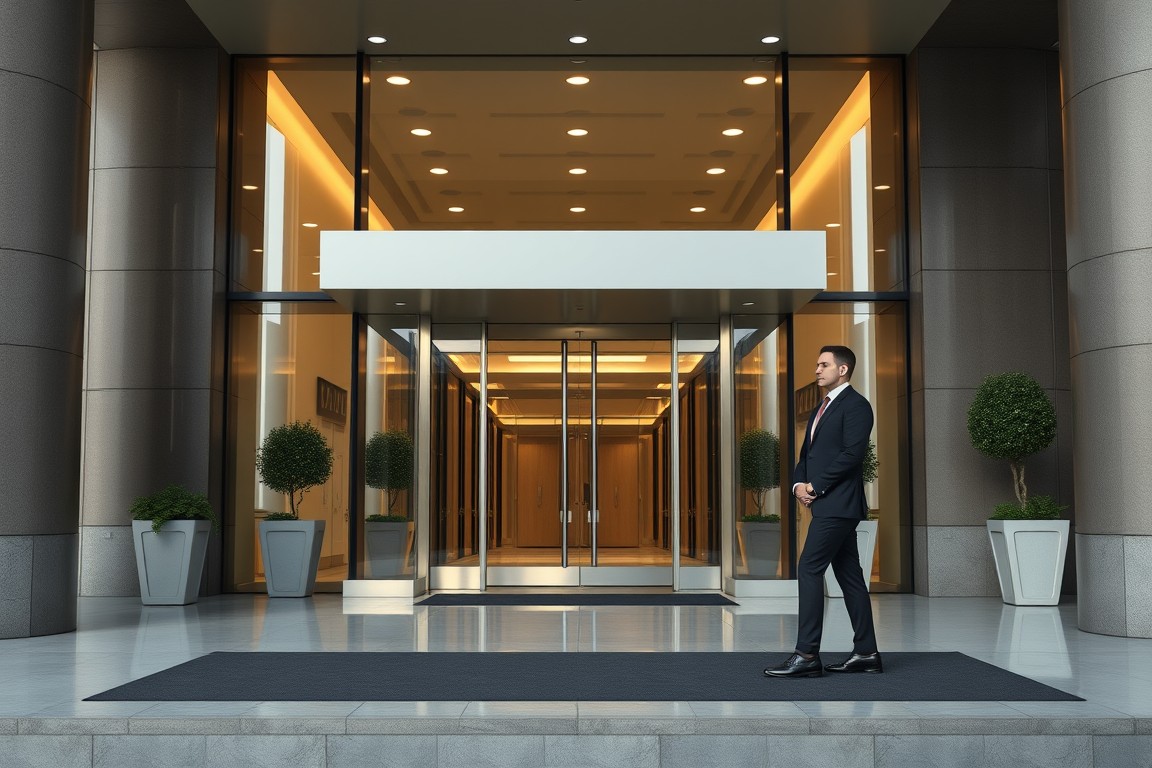
Derek M.
RELATED KNOWLEDGE
Security for Corporate Compliance
Enhancing Security for Corporate Crisis Management: A Comprehensive Guide
Security for Corporate Visitor Management
Comprehensive Strategies for Corporate Data Protection
Security for Corporate Fitness Centers
Secure Learning: How to Implement Robust Security for Corporate Training Centers
Security for Remote Workforces: Best Practices and Strategies
Ensuring Safety on the Go: A Comprehensive Guide to Security for Corporate Travel
Maximizing Safety: Key Strategies for Security in Corporate Warehouses
Security for Corporate Parking Lots

In today's fast-paced corporate landscape, the cafeteria is more than just a dining space—it's a community hub that plays a crucial role in employee well-being and engagement. A surprising statistic reveals that nearly 70% of employees prefer dining options at work over taking lunch away from the office! However, with this convenience comes an imperative responsibility: maintaining security for corporate cafeterias. From safeguarding food supply lines to ensuring employee safety, effective security measures are vital to sustain a positive dining experience. Join me as we navigate the multifaceted world of cafeteria security, exploring best practices that every corporation needs to implement.
Understanding the Importance of Security for Corporate Cafeterias
Let’s talk about corporate cafeterias. They’re not just places to grab a quick bite. They’re hubs of community and collaboration. Picture this: a group of coworkers, laughing over lunch, sharing ideas, bonding over a shared love for tacos. It’s where relationships grow. It’s where innovation often sparks. But here’s the thing—if the security isn’t up to par, all that magic can quickly turn sour.
Imagine walking into your cafeteria and feeling uneasy. You notice a lack of security measures, and suddenly, that delicious sandwich doesn’t taste as good. Risks associated with inadequate security can range from theft to food safety issues. Nobody wants to think about that, but it’s real. Studies show that a secure environment boosts employee satisfaction. When people feel safe, they can focus on what really matters—like enjoying that amazing avocado toast!
The Role of Cafeterias in Corporate Culture
Cafeterias foster a sense of belonging. They’re where we celebrate birthdays with cake, share stories about our weekends, and sometimes even resolve conflicts over a cup of coffee. But if employees feel their safety is compromised, it can dampen that spirit.
Risks Associated with Inadequate Security Measures
Consider this: a survey revealed that nearly 30% of employees have experienced some form of theft at work. That’s a staggering number! If your cafeteria isn’t secure, it can lead to lost belongings, food safety concerns, and even a drop in morale. It’s not just about the food; it’s about creating a safe space for everyone.
Key Elements of Cafeteria Security
So, what can we do about it? Let’s break down some key elements of cafeteria security.
Installation of Surveillance Systems
First up, surveillance systems. These are like the watchful eyes of your cafeteria. They monitor activity and deter theft. Imagine walking into a cafeteria with cameras discreetly placed, keeping an eye on things. It gives a sense of safety, doesn’t it?
Access Control Measures
Next, access control measures. This means limiting entry to authorized personnel. Think about it—do you really want just anyone wandering into your cafeteria? By having a system in place, you can ensure that only employees and authorized guests have access. It’s simple but effective.
Importance of Employee Training on Security Protocols
And let’s not forget about training. Employees need to know the security protocols. Regular training sessions can empower them to recognize suspicious behavior. A well-informed staff is your first line of defense.
Health and Safety Regulations in Corporate Cafeterias
Now, let’s shift gears a bit. Health and safety regulations are critical in corporate cafeterias. Understanding local health codes is essential.
Procedures for Ensuring Food Safety
You want to make sure that food is safe while maintaining a secure environment. This means regular checks, proper food storage, and clear procedures for handling food. It’s not just about security; it’s about the health of your employees.
Role of Hygiene in Both Health and Security Practices
And hygiene? It plays a massive role in both health and security practices. Cleanliness can prevent foodborne illnesses, which is a security issue in its own right. When employees see a clean, well-maintained cafeteria, they feel valued and safe.
Leveraging Technology to Enhance Office Dining Security
Technology can be a game changer in cafeteria security.
Benefits of Cashless Payment Systems
For starters, cashless payment systems can significantly reduce theft. No cash means less opportunity for theft. Plus, it’s convenient! Employees can grab their lunch and go without fumbling for change.
Using Mobile Apps for Tracking Inventory
Mobile apps can also help track inventory and ensure food safety compliance. Imagine having real-time updates on what’s in stock. It not only streamlines operations but also enhances security.
Integration of AI and Machine Learning
And let’s not overlook AI and machine learning. These technologies can provide real-time security insights. They can analyze patterns and alert you to potential issues before they escalate. It’s like having a smart assistant keeping an eye on things.
Developing a Crisis Management Plan for Cafeteria Security
But what happens when things go wrong? That’s where a crisis management plan comes in.
Preparing for Emergencies
You need to prepare for emergencies. What should be included in your plan? Emergency contact numbers, evacuation routes, and protocols for various scenarios.
Conducting Regular Drills and Simulations
Regular drills and simulations with staff can make all the difference. They help everyone know what to do when the unexpected happens.
Importance of Communication in Crisis Situations
And let’s talk about communication. In a crisis, clear communication is key. Everyone should know their roles and how to relay information effectively.
Collaborating with Security Professionals
Finally, consider collaborating with security professionals.
Advantages of Hiring Security Consultants
Hiring security consultants specialized in food service can provide invaluable insights. They can assess your current security measures and suggest improvements.
Creating a Partnership with Local Law Enforcement
Creating a partnership with local law enforcement can also enhance safety. They can offer support and guidance, making your cafeteria a safer place.
Continuous Assessment and Improvement of Security Protocols
And remember, security isn’t a one-and-done deal. It requires continuous assessment and improvement. Regularly reviewing your protocols ensures you’re always prepared.
In the end, security for corporate cafeterias isn’t just about preventing theft or ensuring food safety. It’s about creating a space where employees feel safe, valued, and connected. So let’s make our cafeterias the heart of our corporate culture—secure, inviting, and full of life!
Conclusion
In summary, ensuring robust security for corporate cafeterias is not just an administrative task; it’s a commitment to fostering a safe and enjoyable environment for employees. By prioritizing cafeteria security, investing in technology, and collaborating effectively with security experts, companies can uphold a standard that encourages employee loyalty and satisfaction. As we move further into a new era of workplace dining, it's time to reassess your strategies—because a secure cafeteria is a thriving cafeteria! Don't wait—start implementing these strategies today for a safer tomorrow.


